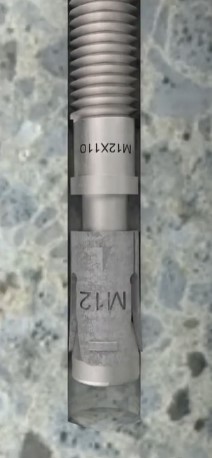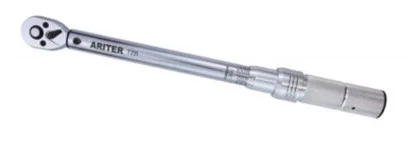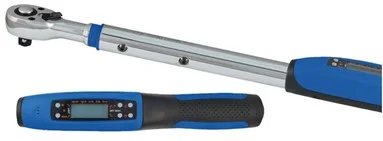Please refer to the applicable product documentation to confirm the installation torque:

- Expansion anchors: the nominal expansion torque detailed in the documentation must be applied.
- Drop-in anchors, concrete screws and chemical anchors: a torque equal to or less than that detailed in the documentation must be applied.
In the case of expansion anchors, too little torque may lead to insufficient expansion of the clamp, resulting in low strength. On the other hand, too much torque may lead to steel failure, failure of the base material (cracking failure) or low strength in the case of a cold soldering between the anchor body and the expansion element in the case of cracked concrete.
In the case of drop-in anchors, an excessive torque can lead to steel failure. In chemical anchors, an overtorque could cause the stud to twist in the mortar, weakening the fixing.
Hand torque wrenches must be used to apply the installation torque. In general, there are three types on the market:
- Click torque wrenches: the desired torque is set in advance; once reached, the wrench will “click”. Once this point has been reached, it should not be overtightened.

- Beam torque wrenches: one beam indicates the instant torque applied on a dial; a second “deflecting” beam is usually included to indicate the maximum torque applied, even if stress is no longer applied.

- Digital torque wrenches: like beam wrenches, but with a digital display. They can include an acoustic warning when the pre-set torque is reached.

You can find more information at the following link
It is recommended that wrenches be calibrated, as their use may affect the accuracy of their internal mechanisms.
The use of impact machines for the installation of anchors is not recommended, as the torque control of these machines is not sufficiently accurate, except in the case of concrete screws, provided that their applicable documentation specifies this, and the power limit established in each case is observed.
Latest revision: FAQ11 rev0

